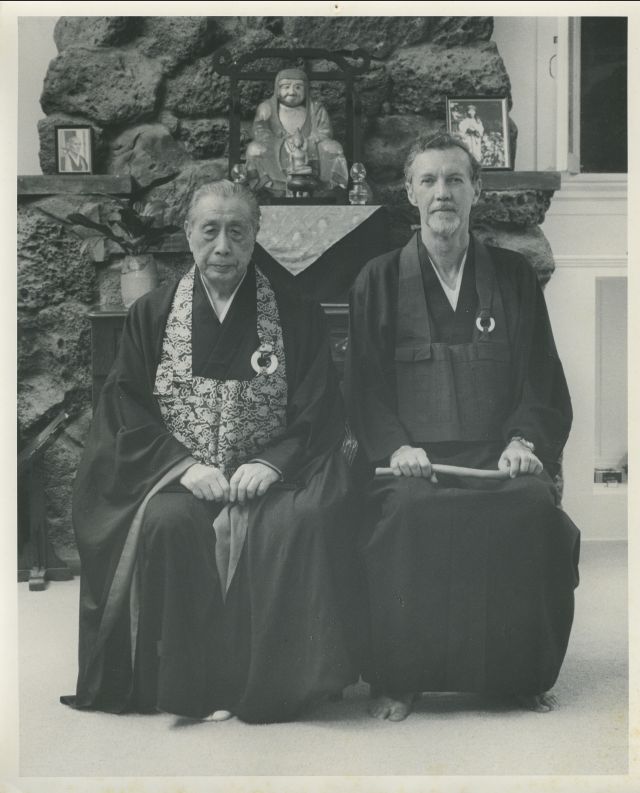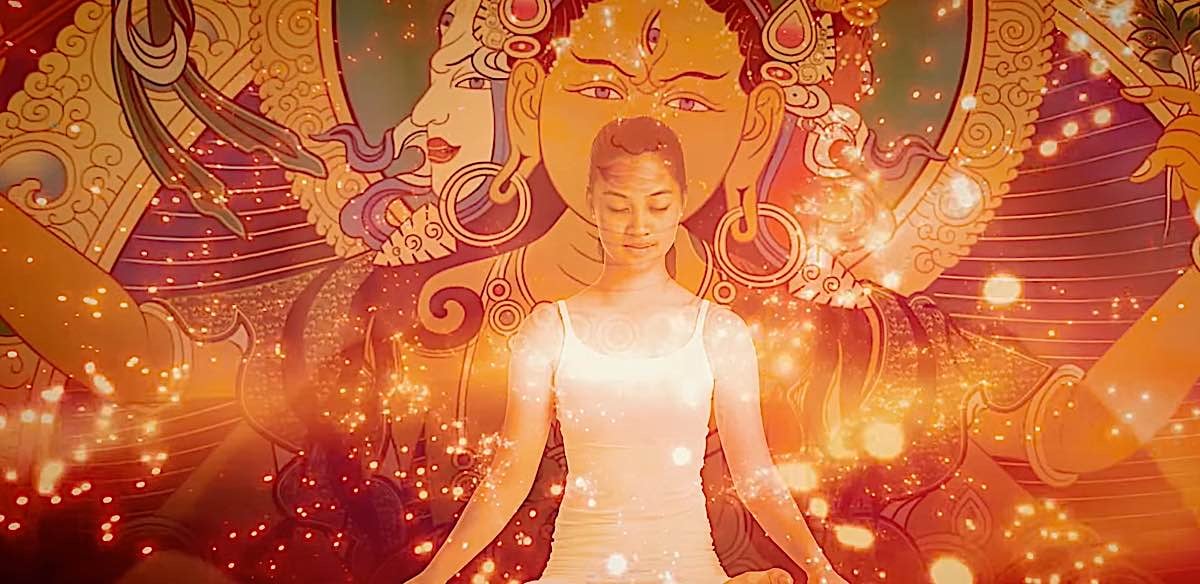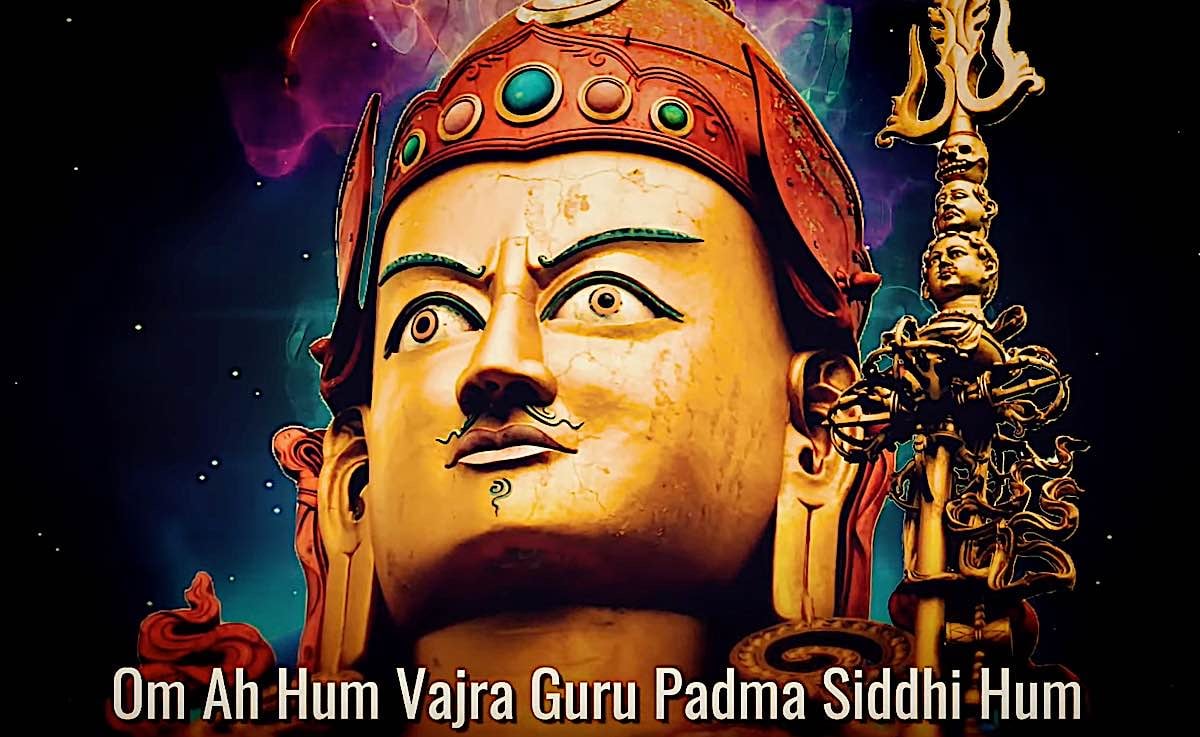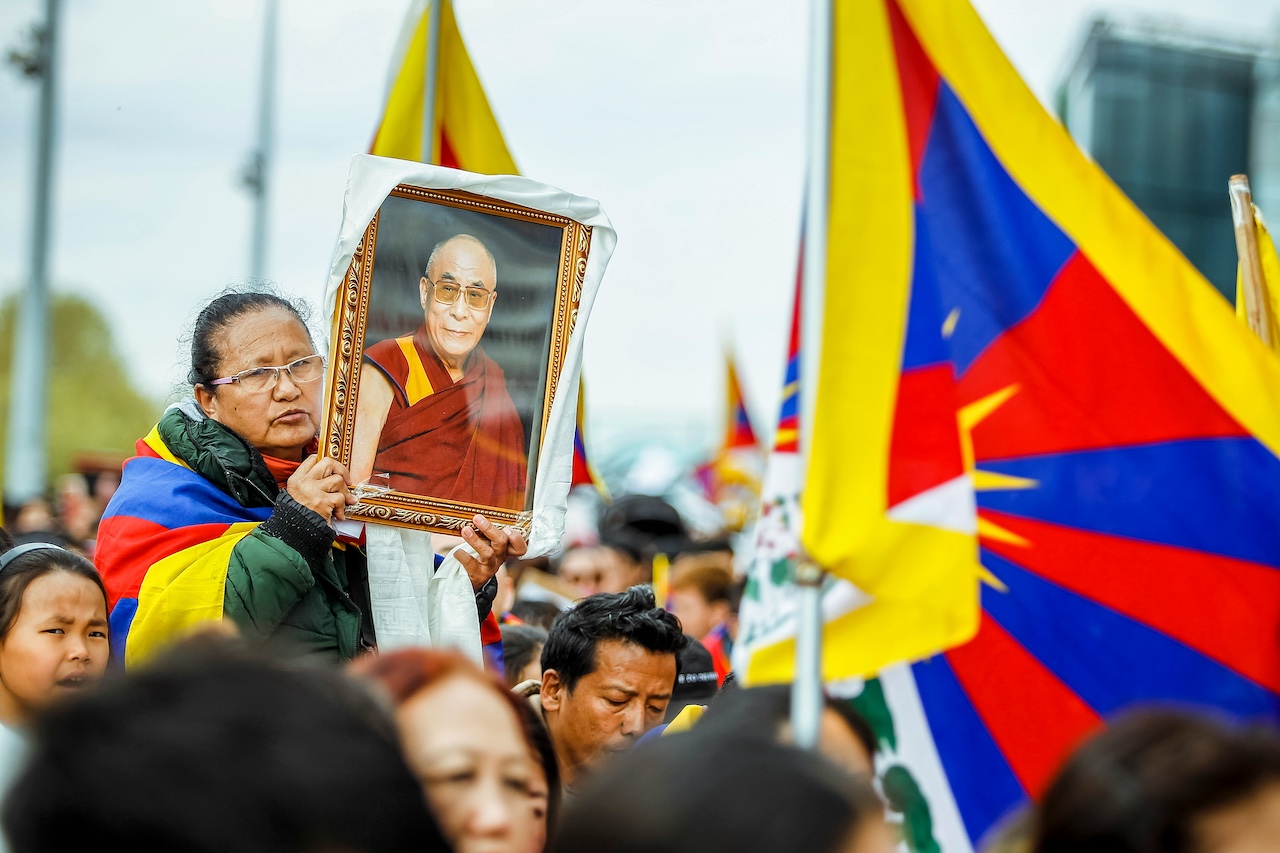Avoiding Spiritual Traps
A dharmic defense of political engagement The post Avoiding Spiritual Traps appeared first on Tricycle: The Buddhist Review.

A dharmic defense of political engagement
By Robert Aitken Jun 23, 2024 Koun Yamada and Robert Aitken. Image courtesy of the Honolulu Diamond Sangha.
Koun Yamada and Robert Aitken. Image courtesy of the Honolulu Diamond Sangha.1989
I had the pleasure of meeting with Joanna Macy recently, and she shared with me a communication she had sent to colleagues in preparation for a panel discussion being planned around the forthcoming visit of the Dalai Lama to the San Francisco Bay Area.
Here are ideas I have lifted from that communication. Joanna points out that we live in a world that can die. Whole species and life-support systems are already dying, and massive want, hunger, oppression, disease, and conflict assail a growing proportion of the planet’s beings. We can do something about it and yet we tend to act as if we don’t believe what is happening. She asks, “How can we become simply present to what is going on and let it become real to us? Great adventures await us; what is it that erodes our will, our creativity, our solidarity?”
Joanna finds that many people have developed notions about spirituality that hinder them from realizing their power to effect change. Among the “spiritual traps” which cut the nerve of compassionate action are these:
1. That the phenomenal world of beings is not real. With this view the pain of others and the demands on us which are implicit in that pain are less tangible than the pleasures or aloofness we can find in transcending them.
2. That any pain we may experience in beholding the world derives from our own cravings and attachments. With this view, the ideal way to deal with suffering becomes non-attachment to the fate of all beings, not just non-attachment to matters of the ego.
3. That we are constantly creating our world unilaterally through our subjective thoughts. Confrontation is considered negative thinking, acceptance is positive. Therefore it is concluded that when we confront the injustice and dangers of our world we are simply creating more conflict and misunderstanding.
4. And the corollary, that the world is already perfect when we view it spiritually. We feel so peaceful that the world itself will become peaceful without our need to act.
Shackles and traps drop away in such lucid exposition of Wrong Views. Our responsibilities stand forth clearly.
1990
I have been thinking about nonviolence from the Buddhist perspective recently. It seems to me that it follows on the Eightfold Path very neatly.
Right Views, the first step on the Path, reveal a world in which beings are in constant flux, coming into life and passing away. These beings are in symbiosis, with everything depending intimately on everything else. This intimacy is more than closeness; everything is inherent in everything else. I include all things: multitudes, as Whitman says.
Violence to another is violence to all, including myself.
Yet each being is unique. Each element of each being is unique. Each leaf of each tree has its own special form. This is the marvelous dynamism of the universe. The function of each individual is to mature as a unique entity with the clearest awareness possible that my fulfillment is the fulfillment of all and the fulfillment of each other being is the fulfillment of all. Nonviolence is the Tao of such fulfillment. Violence to another is violence to all, including myself. Very simple to say; very difficult to practice.
◆
This article was taken from Encouraging Words: Zen Buddhist Teachings for Western Students by Robert Aitken, published in the United States by Pantheon Books, a division of Random House, Inc. and originally published in newsletters of the Diamond Sangha. Copyright © 1993 by Robert Aitken.
![]()
Thank you for subscribing to Tricycle! As a nonprofit, we depend on readers like you to keep Buddhist teachings and practices widely available.
This article is only for Subscribers!
Subscribe now to read this article and get immediate access to everything else.
Already a subscriber? Log in.

 ValVades
ValVades 































